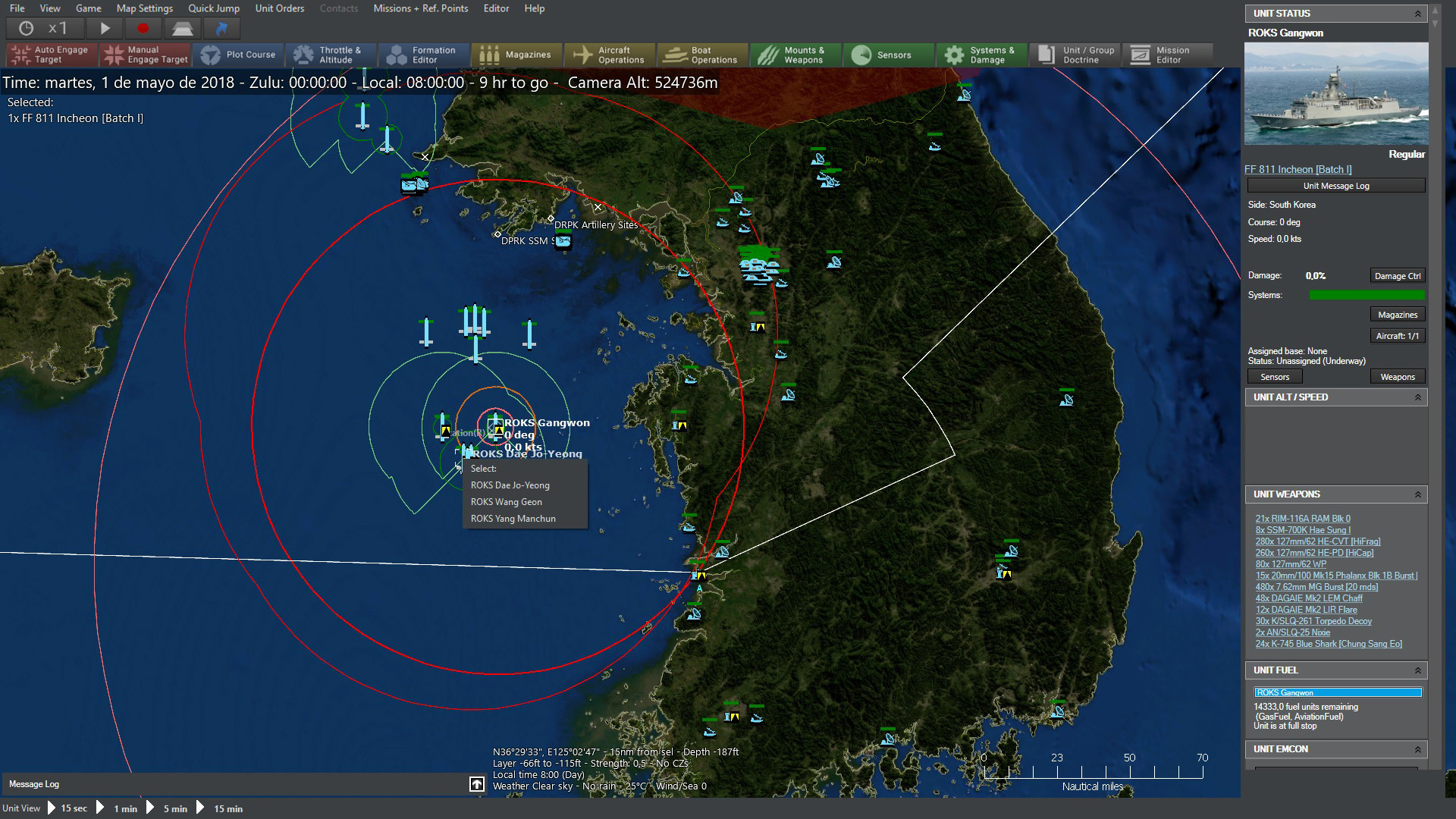Major US Military Modeling and Simulation Software
This article provides an in-depth overview of key US-developed software platforms used for military modeling and simulation (M&S), focusing on tools relevant for researchers studying strategic, operational, and analytical aspects of military operations.
Command: Modern Operations
Command: Modern Operations (CMO), developed by WarfareSims, is a comprehensive simulation platform for modern military operations. It offers highly detailed simulations of air, naval, and strategic land operations, supported by an extensive database of modern and historical military units. The software excels in advanced sensor and weapon modeling, making it a powerful tool for researchers. WarfareSims, a commercial software company, privately owns CMO. Despite its commercial nature, various branches of the US military, including the Navy and Air Force, have adopted it. Additionally, defense contractors and military academies frequently employ CMO for research and training purposes. Researchers primarily use CMO for modeling complex, multi-domain scenarios, analyzing modern military doctrines and tactics, and studying the effectiveness of various weapon systems and platforms. Recent developments in CMO include the integration of commercial satellite imagery for enhanced terrain representation, improved AI for more realistic enemy behavior, and the addition of space warfare capabilities.

AFSIM (Advanced Framework for Simulation, Integration, and Modeling)
The US Air Force Research Laboratory (AFRL) developed AFSIM as a powerful simulation framework. Its key strengths lie in its modular, extensible architecture for custom scenario development, high-fidelity modeling of sensors, communications, and weapon systems, and its support for multi-domain operations analysis. The US Air Force owns and primarily uses AFSIM, but it's also available to defense contractors and academic institutions through partnership agreements. This availability has expanded its use in research circles. AFSIM finds extensive application in studying advanced concepts in air and space operations, analyzing the integration of emerging technologies into military systems, and evaluating the effectiveness of networked warfare concepts. From a technical standpoint, AFSIM is written in C++ with a Python scripting interface, supports distributed simulation across multiple computers, and is capable of real-time and faster-than-real-time simulations.
JCATS (Joint Conflict and Tactical Simulation)
JCATS, developed for the US military by Lawrence Livermore National Laboratory, is an entity-level simulation system used for analyzing joint and combined arms operations. It stands out for its high-resolution modeling of urban and complex terrain, detailed representation of individual combatants and small units, and support for joint service operations analysis. All branches of the US military use JCATS, as do several allied nations and various military educational institutions. Its widespread adoption speaks to its versatility and effectiveness as a simulation tool. In research contexts, JCATS is particularly valuable for studying urban warfare tactics and techniques, analyzing inter-service coordination in joint operations, and evaluating the effects of terrain on military operations. Recent enhancements to JCATS include improved algorithms for autonomous agent behavior, enhanced networking capabilities for large-scale distributed simulations, and the integration of more detailed environmental effects.
OneSAF (One Semi-Automated Forces)
OneSAF, a comprehensive M&S environment developed by the US Army, supports both constructive and virtual simulations. It allows for the creation of detailed terrain and environmental conditions and facilitates modeling of individual entities up to brigade-level forces. While the US Army owns and primarily uses OneSAF, other military branches and some allied nations have also adopted it. It sees extensive use in Army research facilities and training centers. Researchers often employ OneSAF for analyzing tactical operations and battlefield dynamics, testing new doctrines and operational concepts, and evaluating the impact of new technologies on battlefield outcomes. From a technical perspective, OneSAF is built on a service-oriented architecture, supports integration with live, virtual, and constructive simulations, and includes a robust scenario development toolkit.

STORM (Synthetic Theater Operations Research Model)
STORM is a campaign-level analytical model used by the US Air Force for capability analysis and resource allocation studies. It focuses on theater-level air and space operations, incorporates stochastic modeling for more realistic outcomes, and supports analysis of long-term campaigns and force structure decisions. The US Air Force developed and owns STORM, with the Air Force Studies, Analyses and Assessments Directorate (AF/A9) being its primary user. It plays a crucial role in major analyses supporting Air Force strategic decisions. In research applications, STORM is instrumental in studying strategic-level decisions in air and space operations, analyzing force structure and capability trade-offs, and evaluating long-term campaign strategies. Its ability to model extended campaigns makes it particularly valuable for studies involving force modernization and long-term strategic planning.
As we continue to develop Panopticon AI, we're excited about the possibilities...
Feel free to contact us if you have any questions or would like to learn more about our platform.